Consumer spending peaks in the last quarter of every year—a time that coincides with the holiday season and end-of-year bonus payouts. It is also during this time that the greatest number of counterfeit goods are imported into Thailand for sale to consumers, and it is a busy time of year for Customs officials, who are responsible for preventing these illegal activities.
In November 2015, two trucks departed from a warehouse in Chachoengsao, a province in eastern Thailand, heading for Bangkok. En route, the trucks were stopped by a Customs officer, who found that they contained more than 100,000 suspected counterfeit items valued at over THB 100 million. The Customs officer, who worked for Suppression and Prevention Bureau II, then seized the trucks, along with their allegedly illicit content.
At the time of the seizure, Customs did not know whether the goods were genuine or counterfeit, and the owner of the seized goods could not demonstrate that taxes had been paid on the goods. Customs therefore filed a legal charge against the owner under Sections 16, 17, and 27 bis of the Customs Act.
It was then found that the owner of the seized goods did not directly import the goods, but only purchased the goods from an importer who had failed to pay the requisite taxes.
Customs regulations hold that if an individual commits an offense relating to the purchase of goods while knowing that taxes have not been paid on the goods, and the offender agrees to settle the case by surrendering the seized goods to the state, Customs has the authority to close the case and confiscate the goods. This would usually result in the goods being placed at auction.
In this case, however, as the goods included a myriad of different brands and each brand owner or their representative confirmed that the goods were in fact counterfeit in nature, the seized goods were instead destroyed.
The November 2015 seizure is representative of a broader trend for Thai Customs officials: Seizures of fake goods are becoming more frequent, and they are involving larger quantities of high-value products. Thai government statistics, which run on a fiscal year (FY) of October 1 through September 30, support this analysis.
In FY 2014, Customs conducted 770 seizures. This figure increased to 847 in FY 2015, representing a 10 percent year-on-year increase in the number of seizures. The rise in the monetary value of the seized goods was even more dramatic. The total value of the seized goods in FY 2014 was THB 74.7 million, but this figure increased to THB 170.8 million in FY 2015—a remarkable increase of 129 percent.
These figures demonstrate that Customs is effectively cooperating with IP owners and monitoring for infringement to prevent the importation of counterfeit goods into Thailand, as well as their exportation to other countries. As the suppression of counterfeit goods is a core policy of the Thai government and the Royal Thai Customs Department, this growth trend is likely to continue in the year ahead.
To ensure that these successes do indeed continue, brand owners should cooperate with Customs to assist in the verification of seized goods. Without cooperation, Customs cases will become protracted and genuine goods that are seized will not be properly returned to legitimate importers.
Customs Seizures at the Border
In this large case in November 2015, Customs made its seizure while the goods were being shipped within Thailand, rather than at the border. If the seizure had instead been made at the border, a different legal scenario would have been applicable.
When a seizure is made at the border, the importer is considered to be the offender. If each brand owner or their representative confirms that the seized goods are counterfeit, Customs will proceed according to Section 27 of the Customs Act and Sections 110(1) and 108 of the Trademark Act.
Under Section 27, Customs has the authority to fine an importer up to four times the value of the seized goods. If the infringer agrees to pay the fines, the seized goods will be stored and later destroyed. At this point, the criminal action would be deemed final and the trademark owner cannot file a complaint with the police for this offense.
But if the importer does not comply with the Customs order, the case will be referred to the police for prosecution. The police will take approximately six months to investigate the case. The responsible case officer will then forward the case to the public prosecutor, along with his or her opinion on whether the infringer should be prosecuted. If the public prosecutor finds that the case has merit, he or she will file a complaint with the Intellectual Property and International Trade Court.
